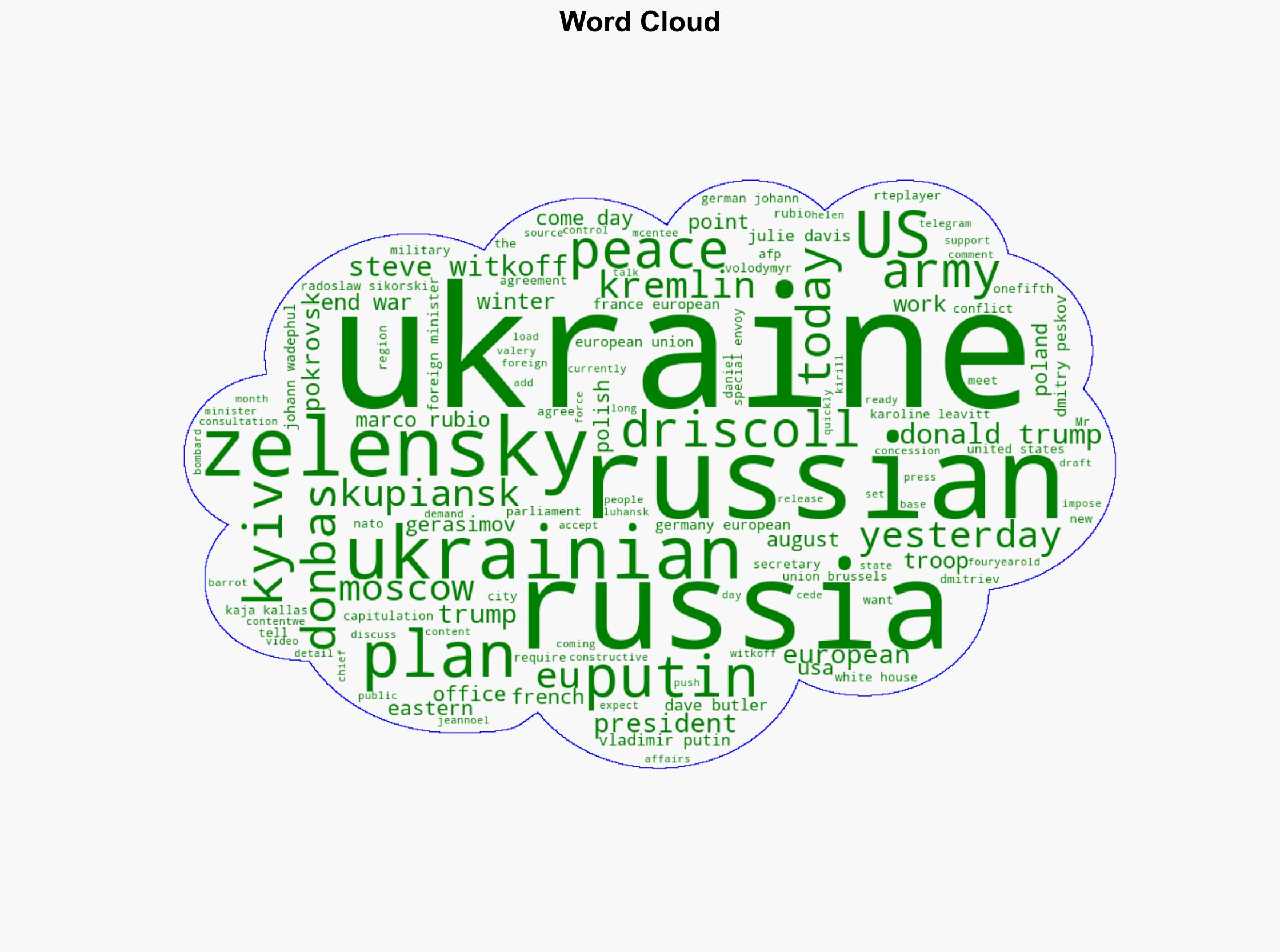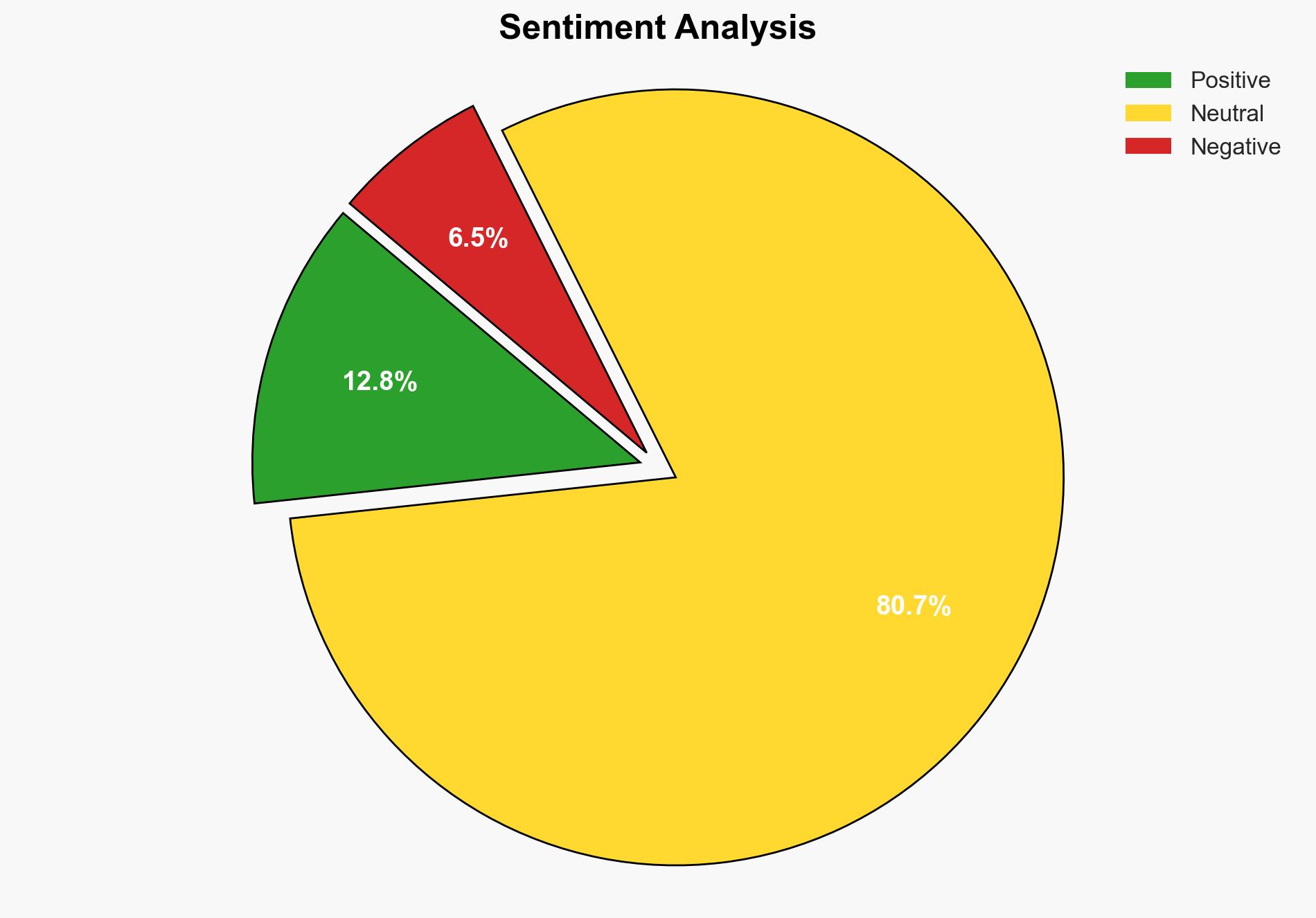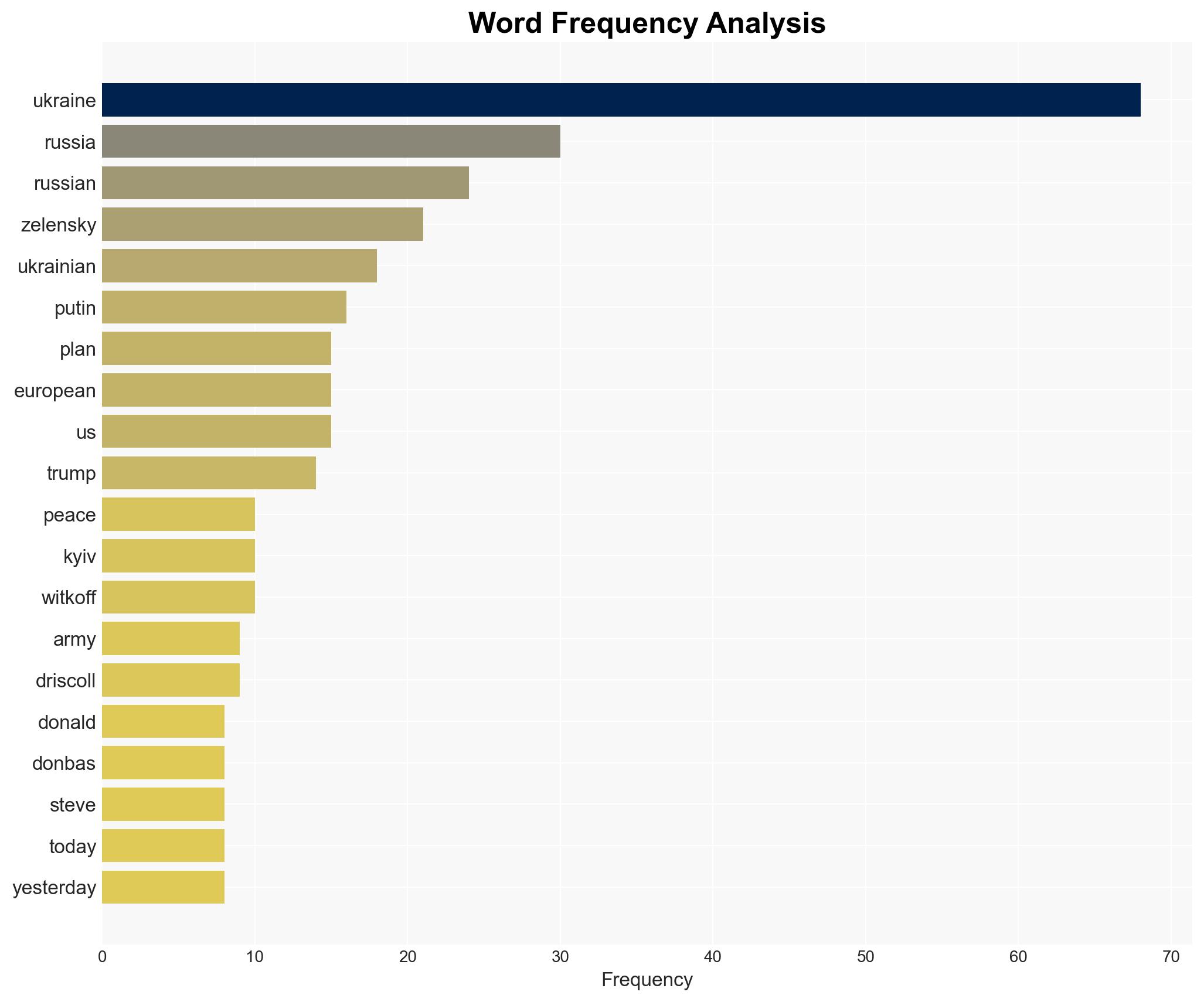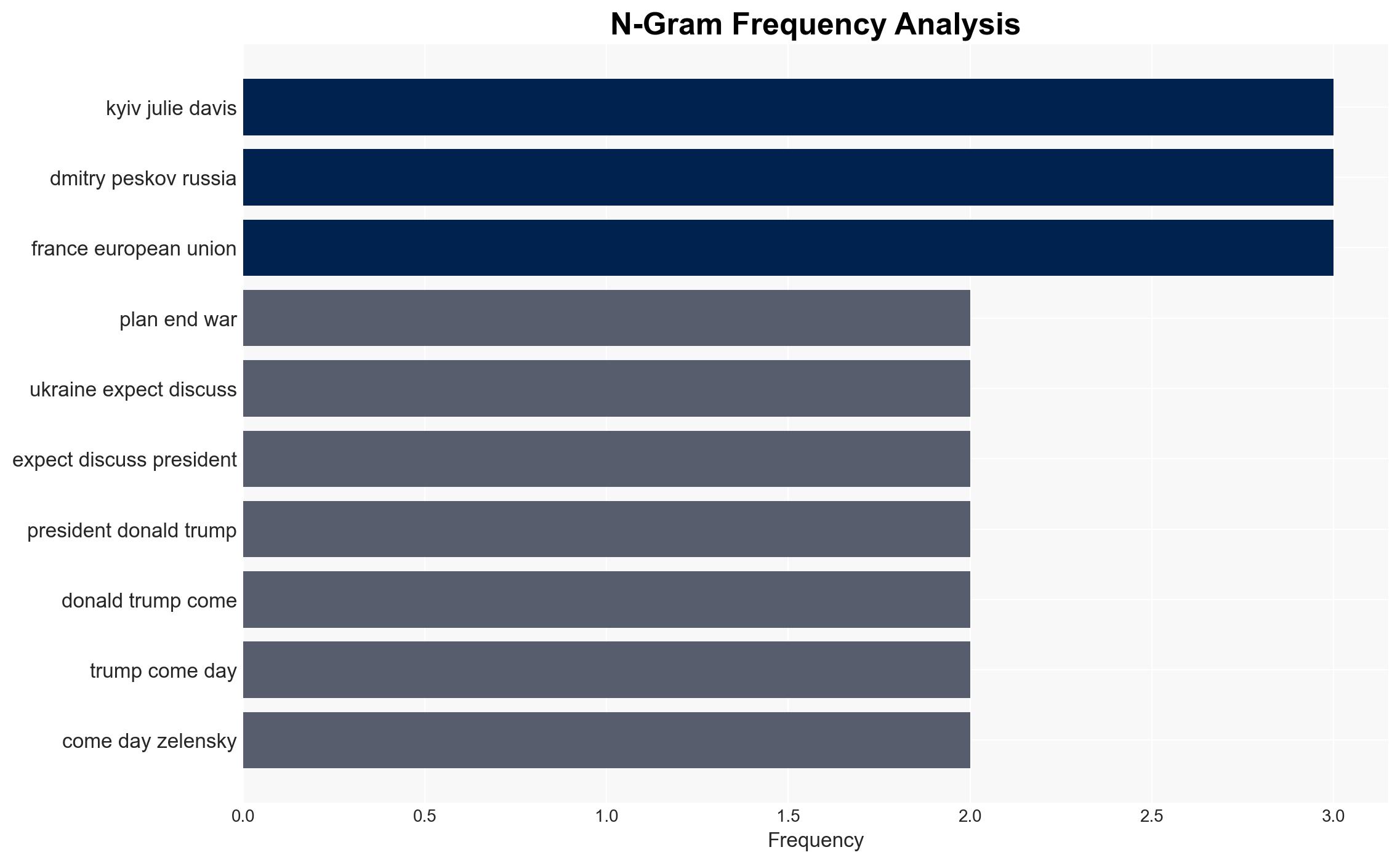Zelensky meeting US Army officials in Kyiv – RTE
Published on: 2025-11-20
AI-powered OSINT brief from verified open sources. Automated NLP signal extraction with human verification. See our Methodology and Why WorldWideWatchers.
Intelligence Report:
1. BLUF (Bottom Line Up Front)
The most supported hypothesis is that the meeting between President Zelensky and US Army officials in Kyiv is part of a broader US-backed diplomatic initiative aimed at negotiating an end to the conflict in Ukraine. This initiative involves significant concessions from Ukraine, which could be perceived as capitulation by some Ukrainian allies. Given the complexity and sensitivity of the negotiations, the confidence level in this assessment is moderate. Strategic recommendations include maintaining diplomatic engagement while preparing for potential backlash from Ukrainian nationalists and allies.
2. Competing Hypotheses
Hypothesis 1: The meeting is part of a genuine effort by the US and Ukraine to negotiate a peace plan that involves territorial concessions and military limitations in exchange for security guarantees and NATO integration.
Hypothesis 2: The meeting is a strategic maneuver by the US to pressure Ukraine into accepting a peace plan that primarily serves US interests, potentially at the expense of Ukraine’s sovereignty and territorial integrity.
Hypothesis 1 is more likely given the involvement of high-level US officials and the reported backchannel communications with Russian counterparts. However, the lack of direct comment from Zelensky’s office on the plan’s content and the timing amidst a corruption scandal suggest elements of Hypothesis 2 may also be at play.
3. Key Assumptions and Red Flags
Assumptions include the belief that both Ukraine and Russia are willing to negotiate in good faith and that the US has sufficient leverage to broker a deal. Red flags include the potential for misinformation or disinformation campaigns by Russia to undermine the negotiations and the risk of internal Ukrainian political instability affecting the process.
4. Implications and Strategic Risks
The proposed peace plan could lead to political backlash within Ukraine, particularly from nationalist factions opposed to territorial concessions. There is also a risk of escalation if Russia perceives the negotiations as a threat to its strategic interests. Economically, the plan could impact European energy markets if it leads to a reduction in hostilities. Cyber and informational threats may increase as parties attempt to influence public perception of the negotiations.
5. Recommendations and Outlook
- Engage in continuous diplomatic dialogue with both Ukrainian and Russian officials to ensure transparency and build trust.
- Prepare contingency plans for potential political unrest in Ukraine and increased Russian military activity.
- Best-case scenario: Successful negotiation of a peace plan that respects Ukraine’s sovereignty and leads to regional stability.
- Worst-case scenario: Breakdown of negotiations leading to increased conflict and regional instability.
- Most-likely scenario: Protracted negotiations with intermittent progress and setbacks, requiring sustained diplomatic efforts.
6. Key Individuals and Entities
Volodymyr Zelensky, Donald Trump, Daniel Driscoll, Marco Rubio, Steve Witkoff, Kirill Dmitriev, Dmitry Peskov, Valery Gerasimov.
7. Thematic Tags
Regional Focus, Regional Focus: Eastern Europe, US-Ukraine Relations, Russia-Ukraine Conflict, Diplomatic Negotiations
Structured Analytic Techniques Applied
- Causal Layered Analysis (CLA): Analyze events across surface happenings, systems, worldviews, and myths.
- Cross-Impact Simulation: Model ripple effects across neighboring states, conflicts, or economic dependencies.
- Scenario Generation: Explore divergent futures under varying assumptions to identify plausible paths.
Explore more:
Regional Focus Briefs ·
Daily Summary ·
Support us





